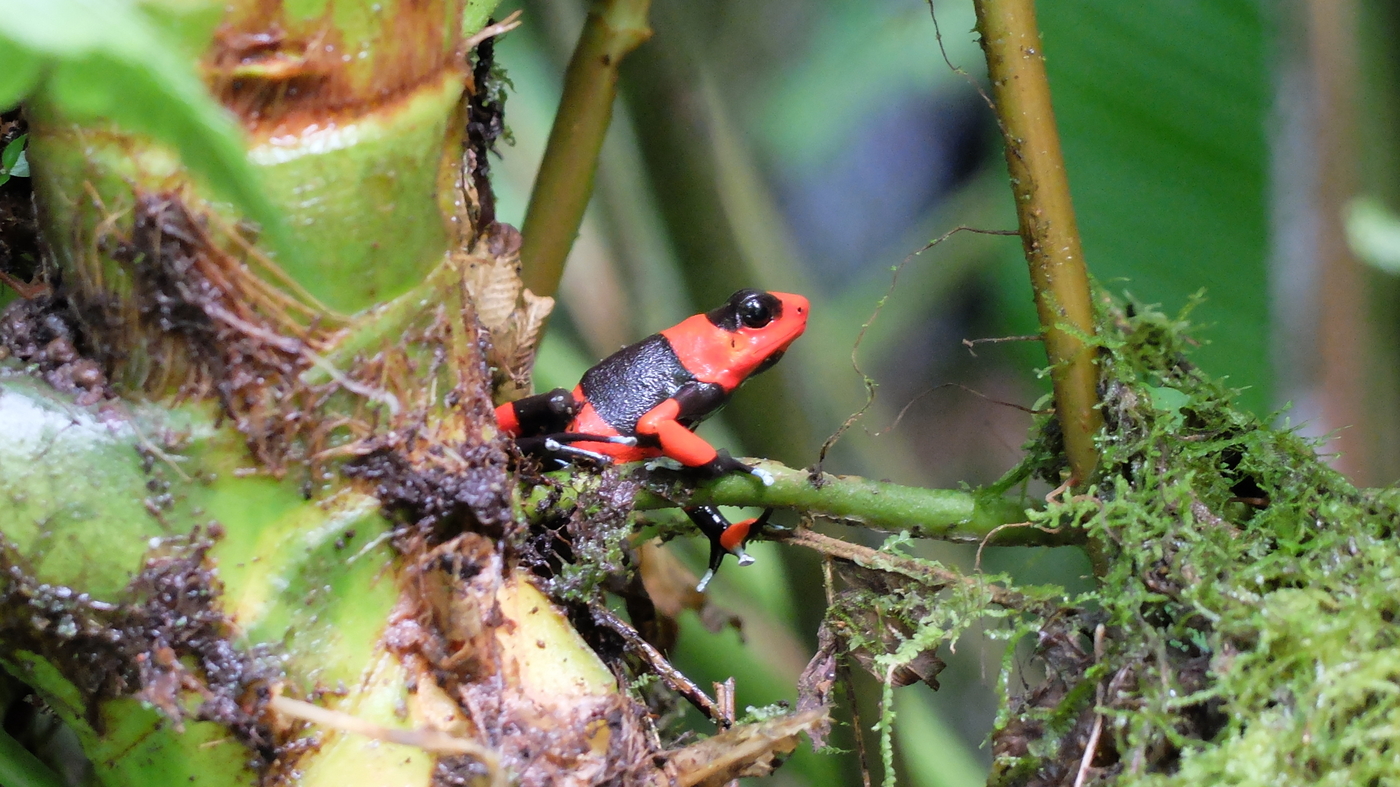
An Oophaga lehmanni frog sits on a branch in its natural habitat, in the Anchicayá Valley, Colombia.
Charlotte de Beauvoir/NPR
Ivan Lozano Ortega was in charge of Bogota’s wildlife rescue center back in the 90s, when he started getting calls from the airport to deal with… frogs. Hundreds of brightly colored frogs.
Most of these frogs were a type called Oophaga lehmanni. Bright red and black, and poisonous. Ivan and his colleagues weren’t prepared for that. They flooded one of their offices to make it humid enough for the frogs. They made makeshift butterfly nets to catch bugs to feed them.
“It was a 24 hour [a day] job at that time,” he says. “And the clock was ticking.”

The frogs were dying, and Oophaga lehmanni was already a critically endangered species. But the calls kept coming, more and more frogs discovered at the airport, left by smugglers.
“Somebody is depleting the Colombian forests of these frogs,” he says. “This is a nightmare. This is something that is going to make this species become extinct. Something has to be done.”
Ivan had stumbled upon the frog black market. Rare frogs like Oophaga lehmanni can sell for hundreds of dollars. They are taken right out of the Colombian rainforest by poachers and smuggled overseas, where they’re sold to collectors, also known as “froggers.” Froggers keep these rare frogs as pets.

According to the biologists who study the Oophaga lehmanni, smugglers have taken an estimated 80,000 frogs out of the Anchicayá Valley in Colombia, the only spot on the planet where you can find them. Today,…
Read the full article here

Leave a Reply